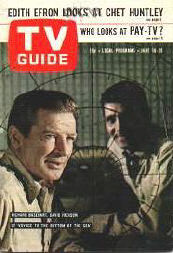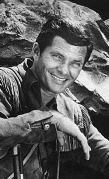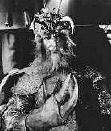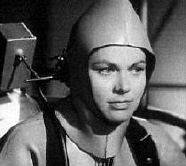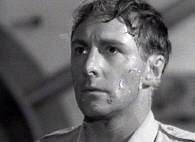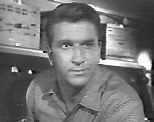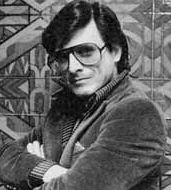|
Continued
I learned other tid-bits about the show. Irwin Allen had fought to have year one filmed in color but the network refused. However, to the network's credit, the N.Y. executives actually stood up and applauded after the screening of Voyage's pilot film in 1963, something virtually unheard of. Many people felt Allen wouldn't be able to pull off a series like Voyage and the pilot convinced everyone that Allen was the man to do it. Richard Basehart once provided his voice as a reciter of Shakespeare for Penny Robinson's reel to reel recordings in the Lost in Space episode "The Derelict" and Basehart's fourteen year old son, Jack, appeared as crewman Jackson in the Voyage episode "Sealed Orders." Novelist Jacqueline "Valley of the Dolls" Susann was a big Voyage fan and she had her picture taken with Basehart and David Hedison in the control room. Years later, Mel Gibson, Drew Carey and Tim Allen would recall Voyage as one of their favorite shows. On The Tonite Show in 1996, as David Duchovny splashed around in a swimming pool, he was accompanied by the original Paul Sawtell music theme for Voyage.
I also learned the real names of the recurring background crewmen on Seaview. Crewman Ray was Ray Didsbury , Phil was Phil Barry, Scott was Scott McFadden, Ron was Ron Stein, Marc was Marco Lopez and Burnside was the late Bill Burnside. Legendary stuntman Paul Stader appeared in many episodes and had dialog as Smitty in "The Mermaid." For completists, there were 110 episodes produced from 1964-1968. During its run, three diving bells were lost, four mini-subs destroyed and six flying subs blown up. A total of 103 crewmen lost their lives (including the 25 Seaview specialists aboard the ill-fated submarine Polidor in "Fear Makers").
The late John Anderson, the scientist in Cradle of the Deep, got a laugh when I told him that, as a kid, I thought his character was played by Danny Kaye. "Good heavens, Danny Kaye?" he said. "I've always been mistaken for John Carradine! I enjoyed doing Voyage. Richard Basehart was one of my closest friends and a wonderful actor. The only problem was working with the silly blob in that episode. We all had a hard time keeping a straight face. I looked at it and said, "What a piece of crap you are! But I guess you're the best blob they could come up with, so let's get on with it."
I've also been fortunate enough to have interviewed most of the regular cast of Voyage. The only one who declined was Robert Dowdell (Chip), who said that he remembered little of the show and didn't care to discuss his acting career. Nigel McKeaned, who played Kelly the sonarman during the first year, couldn't believe I wanted to talk with him. "All I did was sit down at my sonar post and yell, There's a monster dead ahead," he recalled. "It didn't bother me, I knew I was going to get out of acting anyway. But it was a fun experience, with wonderful actors."
The writers of Voyage were also helpful. When I wrote a three-part article for Starlog in 1992 on Voyage, my goal was to contact every single living Voyage writer. I was successful in gaining interviews with almost everyone. I couldn't locate Arthur Browne Jr (Flaming Ice) until years later, and while he didn't particularly like his episode, he loved the series. Another writer granted me an interview but asked that I not publish his name or his quotes (even though his interview was hardly libelous or inflammatory). I abided by that request and it's remained in my files.
In the last decade, the fans have certainly commented on their appreciation for Voyage. So have the critics. Nicholas Aist of TV Guide noted, "Voyage had a dramatic tension that Seaquest never achieved." The late film critic Leslie Halliwell praised Voyage as, "Among the best produced shows of its type, with agreeably zany storylines." Entertainment Weekly recently noted, "It was a mesmerizing show of the 1960s." There have also been magazine
articles, CDs of Voyage's music, cable reruns, cast appearances at
conventions and now talk of DVD releases and a new series. Those
lucky fans who kept their Voyage toys and memorabilia can fetch a pretty
penny by selling them on Ebay. Hey, Clay, my old friend! Are
you reading this? Dig out that old board game and bon voyage!
|
|
His Voyage related articles for STARLOG include: * The Writers of Voyage (issues 181, 182 and 183) His book Science Fiction Television Series (McFarland) has a
chapter on and he has written an extensive online history of Irwin Allen's
Lost in |
|
|

